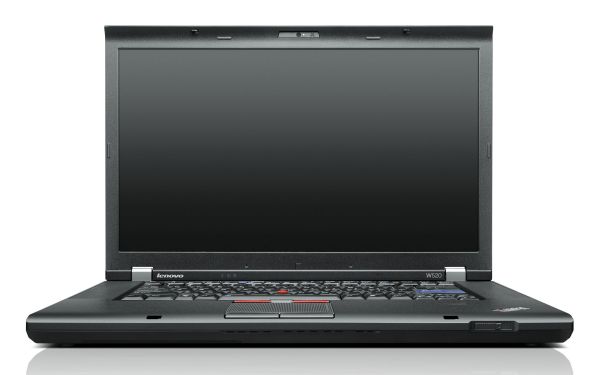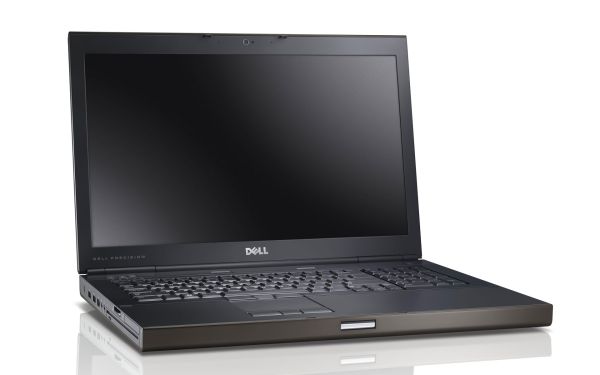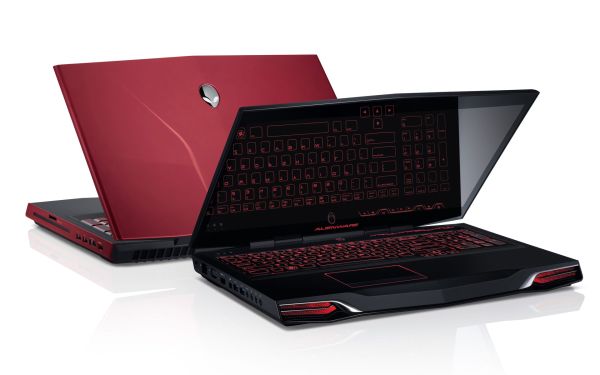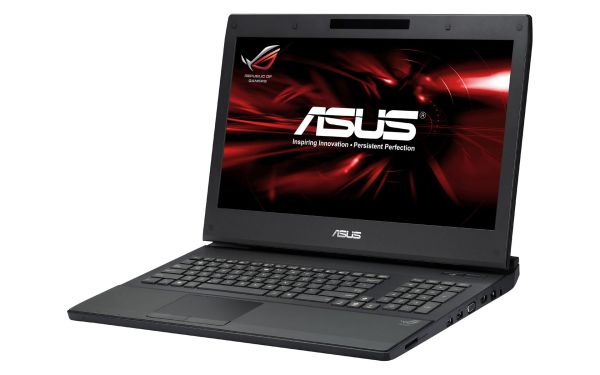Holiday 2011 Laptop Buyer’s Guide
by Jarred Walton on December 2, 2011 3:45 AM ESTGoing for Broke: High-End Laptops and Notebooks
Once we shift pricing to around $2000 and up, we again get a lot of options. There are three primary reasons to go with a high-end (read: expensive) laptop: there’s the no compromise Jack-of-Trades approach, mobile workstations, and no-holds-barred mobile gaming. We’ll take those in turn, though there’s certainly some overlap with the first two.
No Compromises High-End Laptop
A month or so back, one of our readers emailed me asking for advice on what laptop to get. He really wanted it all: battery life, build quality, an excellent display, and even the ability to play games. It’s fine to want it all, but you definitely have to be willing to pay for it. With the display being a major concern—he was very disappointed with most of the laptop displays out there—it narrowed things down a lot. I tossed out the XPS 15 and 15z as possibilities, though their GPUs are a bit underpowered for 1080p gaming. The Alienware M14x also came up, but he felt it was a bit too gaudy. With the Clevo W150HRQ sporting one of the best matte 1080p displays around, we also toyed with that but ultimately ruled it out because of the plastic construction. What was left was a laptop that also fits the next category: mobile workstation (albeit on the lower end of the workstation spectrum).
Built to last, equipped to do (nearly) everything: Lenovo ThinkPad W520 for under $1900
Lenovo’s ThinkPad line has always had a good reputation for build quality, though you’ll generally want to stick with the T-series and W-series to ensure you get the best of what ThinkPad has to offer. The W520 sports the same LCD panel as the Clevo W150HRQ (matte, 95% NTSC color gamut, and about as good as you can get with a TN panel), and it offers up plenty of other upgrades. The base model starts at $1000 and comes with a dual-core CPU, 4GB RAM, 320GB HDD, a Quadro NVS 4200M, and a 1366x768 display—that’s definitely not what we’re after. Grab a bunch of upgrades and you end up with something like this model for $1850.
Lenovo appears to be running some killer sales right now, though, which means you can get additional performance and features and still stay under $2000. We went with the Core i7-2760QM processor, 2x4GB RAM (with two open SO-DIMM slots if you want to upgrade to 16GB), a Quadro 2000M GPU, the 1080p high gamut display, and a built-in colorimeter and with the “TPHOLIDAY” coupon the total still came to under $1900. What’s more, you still get NVIDIA’s Optimus Technology and the large 9-cell battery means you can get upwards of eight hours. The Quadro 2000M is also interesting in that it has the same 192 CUDA cores as the GTX 560M, though at a lower clock and with a 128-bit memory interface; still, it’s enough to handle most games at medium to high detail and 1080p—and if you want to do “real” work, it can handle that as well. It would be great if we could get the W520 with a consumer GPU to save some additional cost, but unfortunately that's not something Lenovo supports; given their focus on business first, it's not too surprising.
Mobile Workstation, Take Two
Okay, the Lenovo ThinkPad W520 certainly qualifies as a mobile workstation, but what if you’re serious about the workstation aspect? Maybe you run some complex CAD/CAM or other scientific software that can benefit from even more GPU performance. In that case, you’re probably looking at Quadro 3000M or higher GPUs, and probably just go for broke with the Quadro 5010M. Sporting a full 384 CUDA cores and a 256-bit memory interface, the Quadro 5010M is the fastest mobile Quadro solution right now. Also, it doesn’t come cheap—not even remotely so. If you want the Quadro 5010M, there are three ways to get there: Dell’s Precision M6600, HP’s EliteBook 8760w, or a Clevo X7200. We’ll just skip the last one, because as potent as the system might be, it’s equally huge and build quality isn’t what we’d want from a $4000+ notebook. So between the Dell M6600 and HP 8760w, which one comes out on top?
For serious work (and serious money): Dell’s Precision M6600 for $4400
We’ve reviewed the HP 8670w, and we’ve tested an earlier version of the M6600 with the Precision M6500; both are clearly targeted at mobile workstation professionals and both have all the support you’d expect for such users. If you’re in the market for such a notebook, there’s a good chance your company is going to decide which one is “best” (because they already have a contract with Dell or HP), but if you have a choice—or if you’re paying out of your own pocket—the Dell Precision M6600 gets the nod for offering basically the same features and performance at a lower price. At the time of writing, you can get the M6600 with an i7-2720QM, 2x4GB RAM, 750GB HDD (or go with a 256GB SSD for $410 more), Quadro 5010M, and a 1080p IPS PremierColor panel for only $4400. Yowza. That includes a $827 instant rebate that Dell is currently running, though, without which the pricing would be a wash. (HP’s 8670w with similar specs currently checks in at $5193.)
Gaming on the Go
Best current gaming laptop: Alienware M17x R3 for $2690
For the mobile gamers who are really serious about gaming, you’ll want the fastest mobile GPU you can find. Sure, you could even go crazy with an SLI or CrossFire notebook, but we’d rather dial it back a bit and remain somewhat sensible. We gave the Alienware M17x R3 a bronze when we reviewed it back in June, and it remains one of the swankiest gaming notebooks around. The starting price of $1500 will get you a quad-core i7-2670QM, 8GB RAM, an HD 6870M, 500GB HDD, and a 900p display. That's actually pretty compelling, and you get switchable graphics (manual Alienware switching with AMD GPUs or NVIDIA Optimus with the green team), so you don't sacrifice battery life—the M17x R3 really does have it all!
Since we're looking at the high-end, though, we'll take the $1900 configuration and upgrade to the GTX 580M for $375 extra, and Alienware also has a $375 upgrade available that will give you a 256GB SSD for your OS and apps with a 750GB 7200RPM HDD for mass storage—just the way we like it. (If you’d rather stick with AMD GPUs, the HD 6990M is $75 less than the GTX 580M.) While we’re upgrading the graphics and other areas, go ahead and throw in the Killer Wireless-N 1103 for $40; it’s a healthy upgrade from Intel’s 2x1 MIMO Wireless-N 1000 and our experience with the 1102 shows that it actually can improve your wireless networking (and gaming) experience.
Good gaming for under two grand: ASUS G74SX for $1939
If spending $2500 or more seems a bit more for a gaming laptop, you can stick with the base setup of the M17x R3, or you might prefer ASUS’ G74SX as an alternative. Like the M17x R3, we gave it a bronze award for offering a nicely balanced gaming notebook, and we did like the fact that ASUS offers an SSD + HDD setup with the G74SX-DH72. The GTX 560M isn’t quite as snappy as the GTX 580M, but it’s enough to run most games (including Skyrim, Battlefield 3, and Batman: Arkham City) at high quality settings and 1080p. We’ll be updating our mobile gaming benchmark suite shortly and will include the G74SX results as a reference point.














88 Comments
View All Comments
aranyagag - Friday, December 2, 2011 - link
I am also holding on to my core 2 duo until it either gives up the ghost or I get a taller screenHrel - Friday, December 2, 2011 - link
Gonna have to disagree on the midrange gaming laptop.http://www.cyberpowerpc.com/system/Xplorer_X6-9300...
I have for some time, and continue to believe this is simply the best laptop per dollar you can buy right now.
JarredWalton - Saturday, December 3, 2011 - link
That's practically the same as our W150HRQ recommendation in many ways, only without Optimus and with a faster GPU. However, it's also $1200+ where we linked an ASUS G53SX going for under $1000. The Clevo P151HM is potentially faster, but having reviewed the P151HM I can say that the keyboard quality and overall build quality are nothing special. I would rather have the ASUS.Hrel - Saturday, December 3, 2011 - link
Jarred, you and everyone else at Anand are always going on about laptop screens. How can you recommend the Asus when you know the screen is bog standard? Yes it's 1080p, which helps. But viewing angles, contrast, color accuracy, all those are areas where Asus consistently and inexplicably goes with a sub-par display.Hrel - Saturday, December 3, 2011 - link
Also to clarify, from my perspective money isn't a concern as much as bang/buck is. And I care a great deal about the screen. I will say, while I'm satisfied with the quality of the speakers on the P151 Clevo, they could be louder. My only other complain though is the 10 key, the 0 needs to be moved over, if that means shrinking the arrow keys that's fine with me; then make the enter key larger or move it to the left. Build quality however and the rest of the keyboard, and tactile feedback, I find very impressive. I bought this laptop after asking you if I should get this or the MSI actually. You said Clevo or Asus, I went with the Clevo and couldn't be happier with it.JarredWalton - Saturday, December 3, 2011 - link
My understanding is the G53SX has models in both matte and glossy, and that those are all higher contrast displays. However, I can't say for sure as ASUS is clearly sourcing from multiple vendors. Right now, I only know of two matte 1080p 15.6" LCD panels, both from AU Optronics and both good quality. One is high color gamut and the other is standard sRGB, and I would be happy with either one.If you've personally seen the G53SX and it does not have a decent contrast (e.g. it has a very poor black level), let me know, but the information I was able to dig up suggests the 1080p models are better than average displays.
Hrel - Saturday, December 3, 2011 - link
Oh, also the GTX560M is the slowest GPU I'd accept. It is a shame it doesn't have Optimus, especially since it's supported. But the battery life is quite impressive, in my own uses.pepperoni - Friday, December 2, 2011 - link
Jarred - I was a little surprised by your dismissal of 3D panels on notebooks. I have never seen a 120Hz display, but I have been intrigued ever since I read this review by your colleague:"[It] was my first exposure to 120Hz refresh displays that aren’t CRTs, and the difference is about as subtle as a dump truck driving through your living room. I spent the first half hour seriously just dragging windows back and forth across the desktop - from a 120Hz display to a 60Hz, stunned at how smooth and different 120Hz was. Yeah, it’s that different." --Brian Klug 8/7/10
Your critique of mobile 3D has mainly centered on the lack of utility -- a point I completely agree with. Like you, I have zero interest in viewing any 3D games or movies on a notebook (or in my living room or in a theater, for that matter), but if 120Hz benefits the 2D experience half as much as Brian Klug claims, it sounds great.
The Toshiba A665-3DV you reviewed had crappy resolution and low contrast. I'm thinking about Dell's XPS 17 with 1080p 3D. Do you think 120Hz is a worthwhile upgrade for someone like me who hates 3D?
snuuggles - Friday, December 2, 2011 - link
I agree. I own an hn274h for 2d only, it makes a significant difference in my day to day activity and game playing. Everything just feels... Crisper? I'm not sure how to describe itOne reason they might not want to do it it power use, I'm guessing if it's running twice as fast it'll use more juice. But the truth is that there's simply no market for better displays--witness all the 13" 1360x768 60hz tn panels on supposed high end ultra books. The average consumer is idiotic.
Hey, not to put too fine a point on it, but our own jarred recommended the UTTERLY worthless ux31 based from what I can only guess is on the looks and specs. Certainly anyone who tried to use it to work would instantly find the keyboard--the single biggest differentiating factor between this and a tablet--completely unusable due to the short throw and stiff action of the keys
Sorry Jarred, you blew it big time. I'm not normally this harsh to an individual, but you need to hear this: it is unacceptable for you to recommend something based on specs alone
JarredWalton - Saturday, December 3, 2011 - link
Two things for you. First, here's the last part of my paragraph dismissing 3D: "Okay, sure, the 120Hz refresh rates would actually be nice, but does anyone want to view 3D content on a notebook?" I like the idea of 120Hz displays for non-3D purposes, but unfortunately you have to pay for all the 3D rigmarole to get there (e.g. glasses, emitter, etc.) and you generally can't get 120Hz displays unless you go with NVIDIA GPUs.Second, and this is specifically for snuuggles, I've got the UX31E sitting on my test bench right now. I can tell you the expected battery life and the performance. Given that it's an ultrabook, going outdoors into brightly lit environments is a very likely use case. A 500 nit display is going to be very useful. Would I prefer higher contrast? Of course, but at least the resolution is better than the competition. But you weren't talking about the display.... [To be continued!]